It is the relationship that makes the work exist. The all-inclusive exhibition at the Guadagnucci Museum in Massa
Nine contemporary artists, each with their own background and their own language and technique, from installation to sculpture, ceramics to video and even virtual reality, were invited to relate to the same museum space through their works, according to their personal taste and style. The result is a very harmonious exhibition project, where, despite the diversity of the artists involved, no work overpowers the others in a place of sharing and where each can be read as a work in its own right but at the same time as part of a whole rooted in the fundamental idea of relationship and community. The basic principle around which the exhibition, conceived by Cinzia Compalati, who in addition to being its curator is also director of the museum where it is on display until Oct. 2, 2022, the Guadagnucci Museum at Villa La Rinchiostra in Massa, was conceived, is that it is precisely the relationship that makes the work itself exist: the relationship with the community, with the public and with the exhibition space.
In fact, the title itself, All Inclusive, refers not only to the concept of inclusion but above all to that of sharing and interaction: in fact, the artists committed to perform the museum all together, designing installations that would activate its spaces. “The invited artists, all very diverse in terms of poetics and media used, were selected not so much for their individual contributions as for their aptitudes to be able to interact within an unprecedented group that was more than the sum of its individual elements,” the curator explained. The nine “stations,” as she called them, are therefore absorbed by visitors as works and installations of contemporary art in front of which to abandon themselves totally, to experience them by fully grasping that desire for interaction that underlies the project.




The first with which the public is greeted in the park surrounding the museum fully emphasizes the work-observer relationship since it only makes sense if the visitor interacts with it. In Anima, by the Tuscan Simone Gori (Florence, 1986), the public is in fact invited to look into a sort of lock created by the artist in the monumental marble installation: thanks to a spy light and a play of mirrors inside, the visitor has the opportunity to observe the sky, which becomes a conceptual, changing and private representation of the soul, in this case not of the individual but of the material itself, so dear to Guadagnucci. One’s view of it will always be different and changeable depending on the time of day and the condition of the sky.
As soon as one enters the museum, one will have the opportunity to interact instead with an augmented reality tool designed by Vincenzo Marsiglia (Belvedere Marittimo, 1972): thanks to the HoloLens 2 visor to be worn, visitors will see the walls and works of the museum become colored and decorated with the artist’s iconic pattern, namely the four-pointed star. Indeed, the Map (Star) the World project combines tradition and innovation, sign painting and new technologies. A visionary experience that takes anyone wearing the viewer into a parallel reality made of colors, symbols to grasp and buttons to click virtually.
Aldo Giannotti (Genoa, 1977) is responsible for the exhibition’s guiding image: a black-and-white drawing in which the artist places the Guadagnucci Museum at the center, from the roof of which a beam of light departs, and it is thanks to the beam of light that the museum is spotted by a kind of spaceship. Starting precisely from this drawing, the Genoese-born artist performs on the Massese museum venue a real performative action, the photographic documentation of which remains. A beam of light placed on the roof of the Guadagnucci Museum indicates in the sky the exact location of the place of culture, to invite people to visit and learn about it. In fact, the project A Vertical Spotlight is placed on the Rooftop of the Institution and can be seen from the whole Town, which on this occasion involved the Guadagnucci Museum, intends to illuminate places of culture, making them become landmarks of a city.
One then enters a 1980s birthday party: the gift packages, the table laden with things to eat, including taralli, mozzarella, sandwiches and sandwiches, pizzettas and olives, the banner with colorful flags, all made of ceramics. It is the installation by Giorgio Di Palma (Grottaglie, 1981), conceived by Pigment Bari and created with the involvement of Polignano a Mare citizens, who provided the ceramic artist with photographic images of old birthday parties set up at home, with the gift corner, the food corner, the corner next to the drink with the inevitable chair for the parents. A journey back in time that brings back memories of decades past to the audience’s mind, through which a sense of community inevitably comes into play.
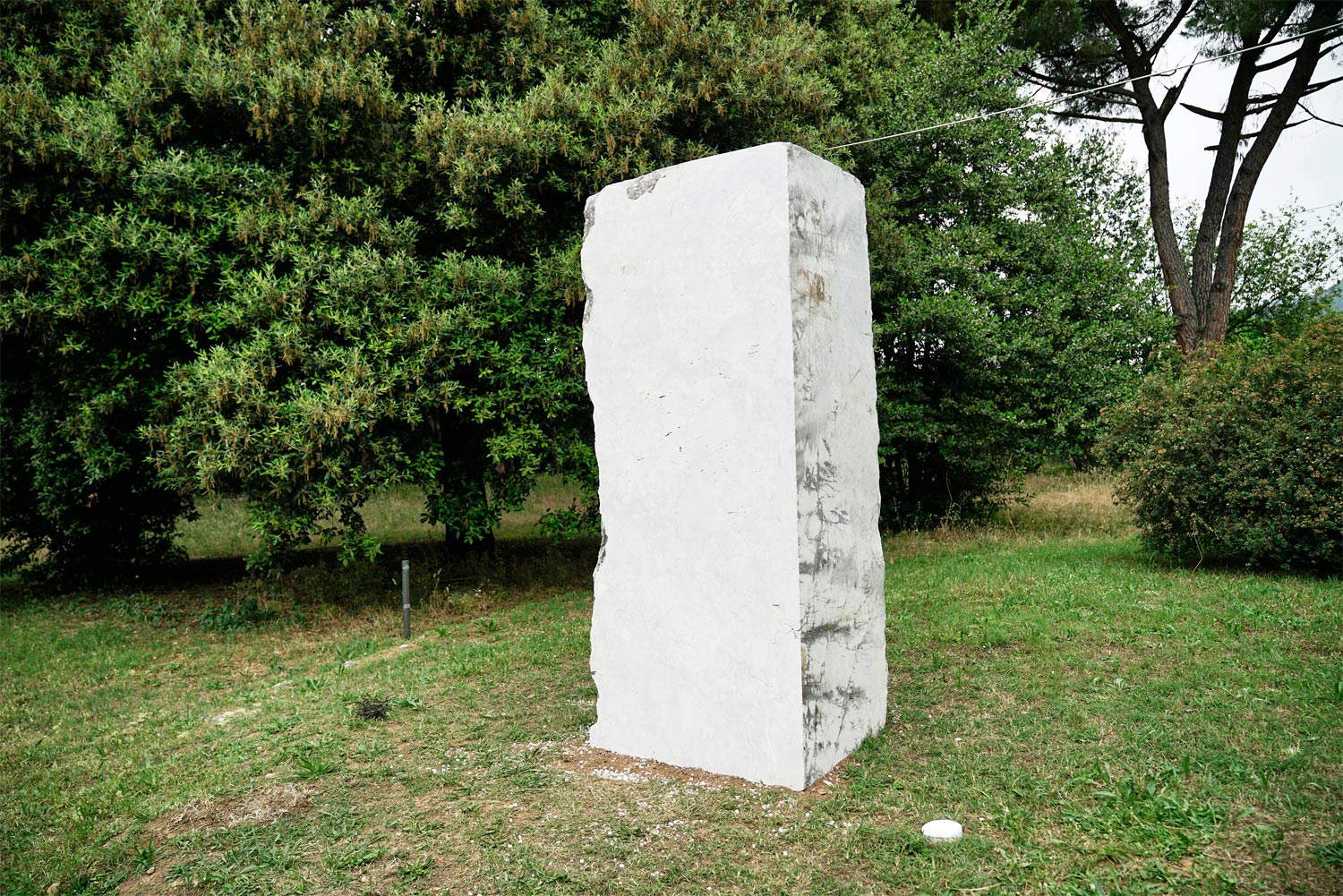
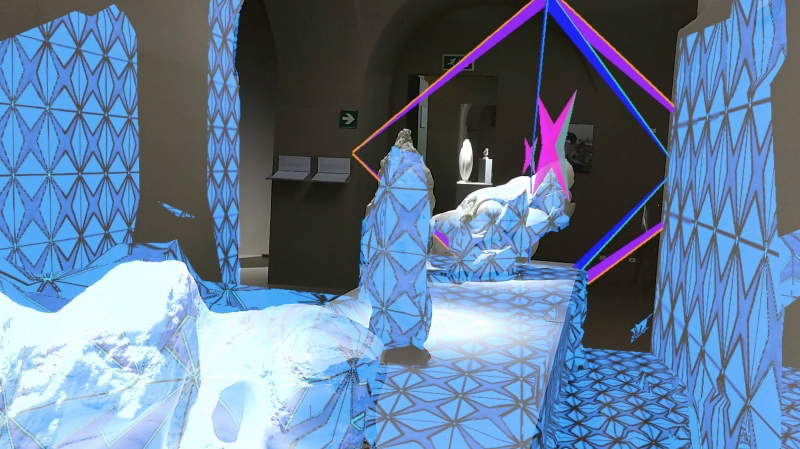
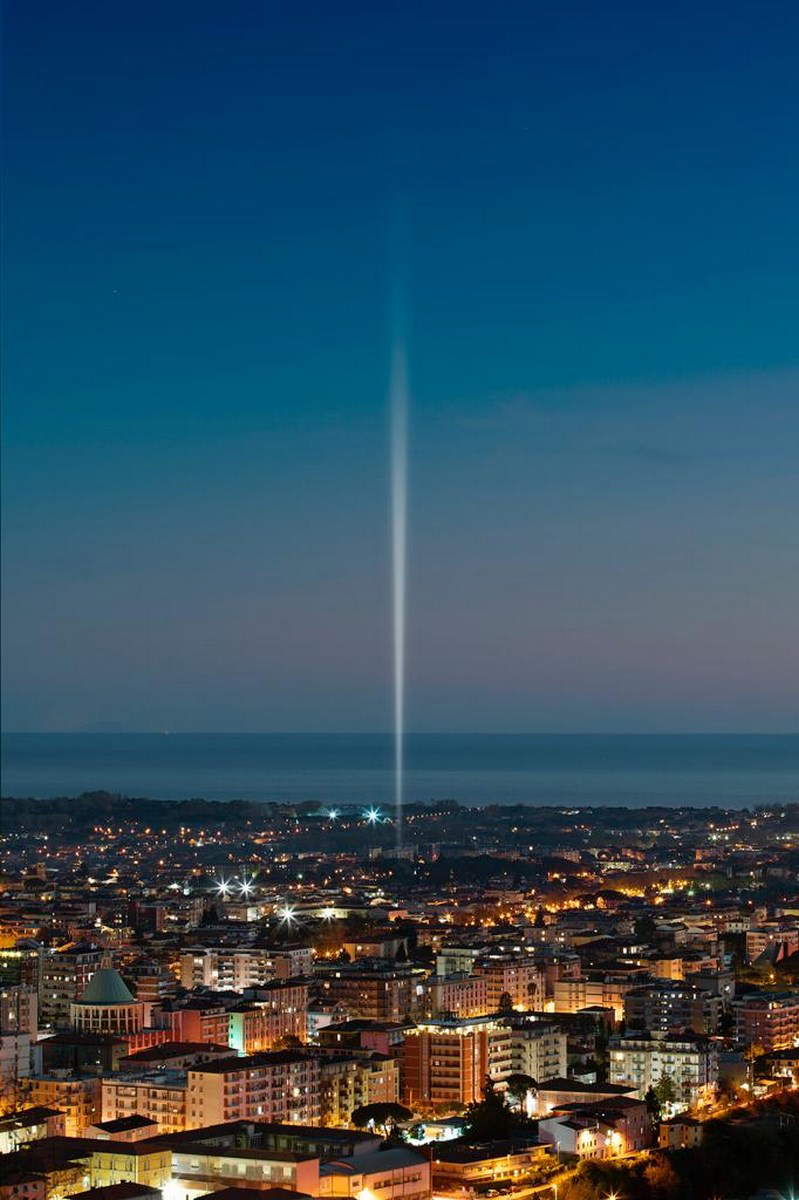
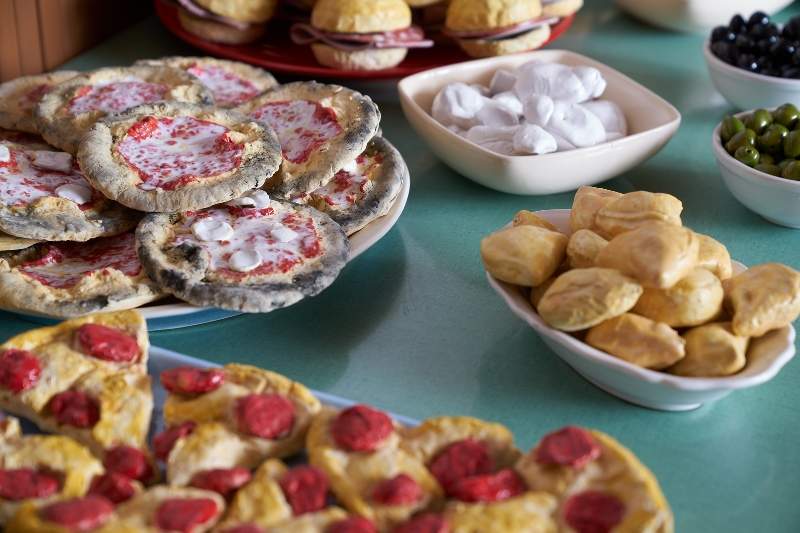
The theme of the relationship with the community is also at the center of the performance by Eleonora Chiesa (Genoa, 1979), documented in a room of the museum through a video. The artist had involved in 2015 some inhabitants of Apricale, a Ligurian village in the province of Imperia, in her performance Lightness. During Apricale’s annual festival, between the Lizard Castle, the Torracca and the Piazza, Eleonora Chiesa had staged a performative project resulting from her artist residency, starting with the Latin palindrome “In girum imus nocte et consumimur igni” used by Guy Debord in 1978 for the making of his film. Reflecting on loneliness as a condition that can generate both a sense of isolation and introspective reflection, he realized in the most representative places of the village a collective and participatory action.
The relationship with the environment is instead addressed in another room, obscured for greater visibility of the installation, by the three alabaster video sculptures by Aqua Aura (Vimercate, 1969), a pseudonym for an artist who goes in search of the sublime in our present. A recording of anentire sub-Arctic day is projected onto these particular iceberg-shaped sculptures: from the morning with a bright sky crisscrossed by white clouds to a stormy sky, to the dusk and darkness of night with the spectacle of the northern lights. Thus, the series Shelters - On the Very Nature of Light, to which the three sculptures on display at the museum belong, proposes the theme of the relationship between man and nature.
Poetic and romantic are the three pairs of swings presented by the duo Antonello Ghezzi, formed by Nadia Antonello (Cittadella, 1985) and Paolo Ghezzi (Bologna, 1980). Always linked to children’s play, the swings hung in ad hoc corners found within the museum speak of love: in fact, three different phrases, namely, Spingiamoci Oltre, Tienimi Forte and Sempre Insieme, are read on the seats made up of reflective planes, respectively. Three exclamations that refer to the magic and carefreeness of an adolescent love, capable of overcoming everything only if one is next to the loved one. Like the binomials written on the swings, where words lose meaning when removed from each other.
The only sculptor in the exhibition, Sandro Del Pistoia (Viareggio, 1975) proposes in dialogue with Gigi Guadagnucci’s masterpieces three of his works that have white as their dominant color, like the master’s marble ones, but made with light materials such as silk, wax, wood and plaster. Moving Day for the Soul, which resembles a sack-like form inside of which a series of wooden branches is kept like a treasure; Gain of function / Increase of function, which depicts an individual inside a gilded cage; 24/02/2022, which indicates the date of the beginning of the work but especially the date, known to all, that marked the beginning of the war in Ukraine.
Finally, composer and sound designer Emiliano Bagnato (La Spezia, 1993) made it possible for visitors to listen to an "impossible dialogue" with Maestro Guadagnucci centered on Brugiana, a sculpture named after a mountain above Massa that is very dear to the artist. From two old radios comes the voice of the well-known sculptor, taken from an interview conducted by Apuan videoamateur Alberto Grossi, interspersed with fragments of songs Guadagnucci loved, reinterpreted by Bagnato’s guitar. And the sound of nature and marble working provides the background to this impossible dialogue.
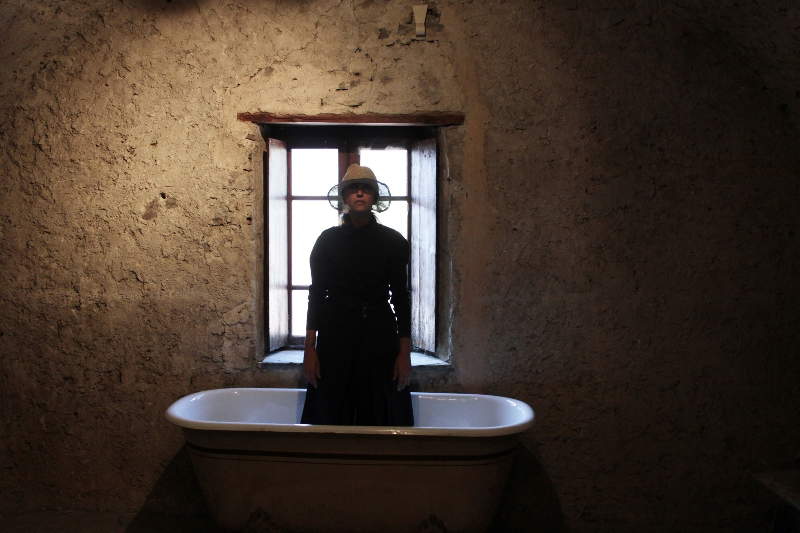
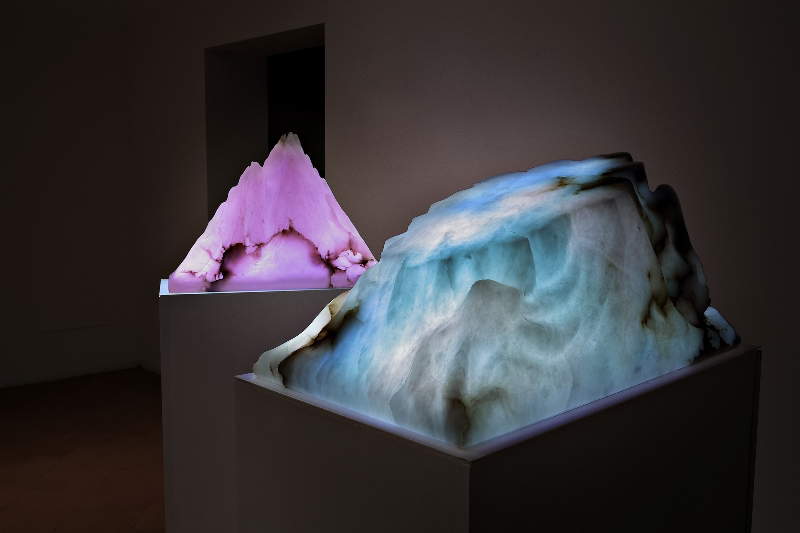
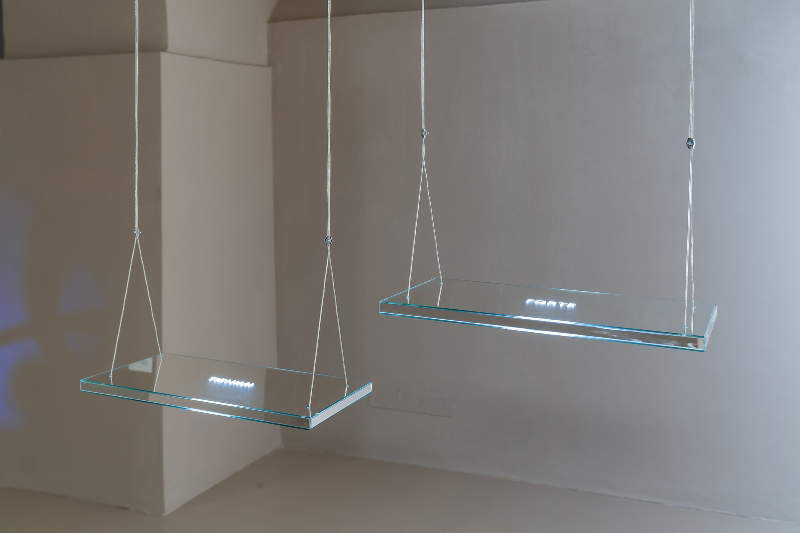
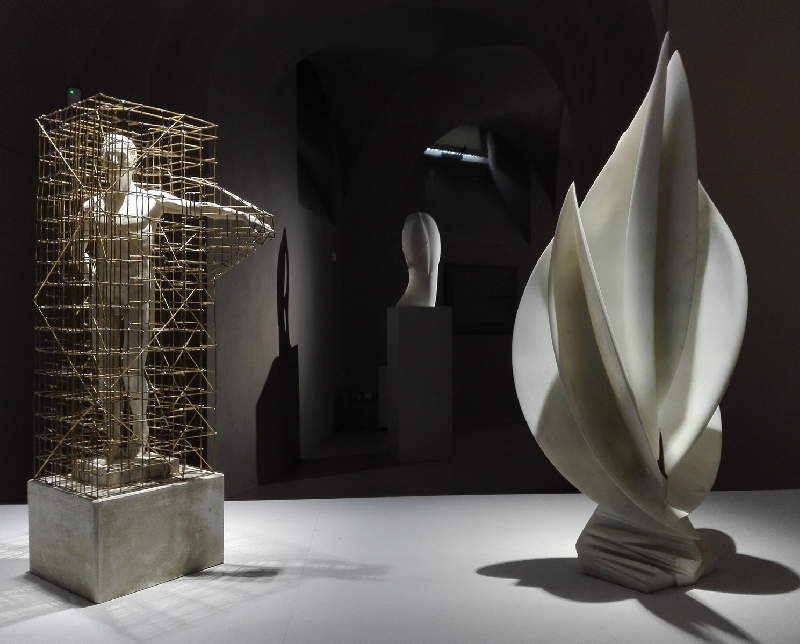
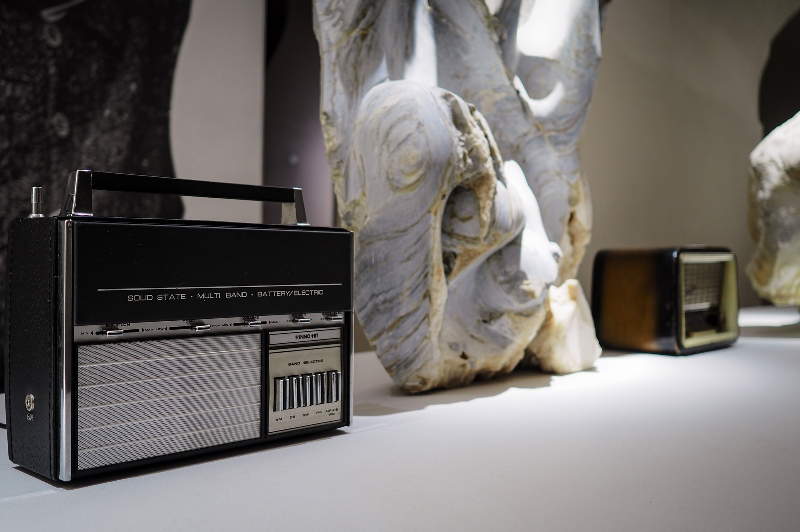
The exhibition concludes with another work by the duo Antonello Ghezzi: a ladder to go Beyond, a word written in Led on the mirror surface, and thus get closer to the sky.
All Inclusive is a tribute in a contemporary key not only to the great sculptor to whom the museum is dedicated, but to the museum itself: the nine artists involved have performed it, each in their own way, creating together a project that is pleasantly to look at, with the desire to make visitors walk through it in an active and participatory way. Their works are perfectly set among the master’s masterpieces, respectfully maintaining the harmonious balance that distinguishes the permanent exhibition route. In addition, this idea of inclusion, collaboration and relationship with both the public and the environment, which is the basis of the entire project, creates a feeling of positivity that especially in this historical period is not to be underestimated at all.
Warning: the translation into English of the original Italian article was created using automatic tools. We undertake to review all articles, but we do not guarantee the total absence of inaccuracies in the translation due to the program. You can find the original by clicking on the ITA button. If you find any mistake,please contact us.




























